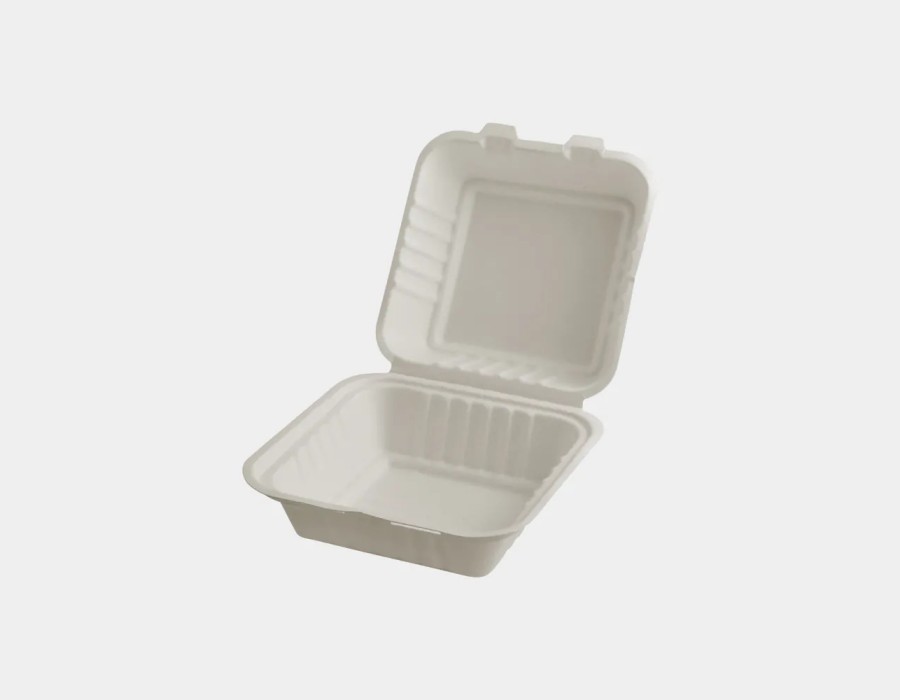Plastic waste continues to be a major environmental challenge worldwide, with food packaging being a significant contributor. As consumers and businesses search for sustainable options, biodegradable food containers with lids have emerged as a promising alternative. These containers offer an eco-friendly solution to traditional plastics, reducing environmental impact while providing convenience and practicality. In this blog, we’ll explore how biodegradable food containers with lids are helping to reduce plastic waste and why they’re a smart choice for a greener future.
The Environmental Impact of Plastic Food Packaging
Plastic food packaging, especially single-use items, accounts for many waste in landfills and oceans. Due to its long decomposition time—up to 500 years—plastic accumulates rapidly, polluting ecosystems and endangering wildlife. Single-use plastic containers and lids, often used in takeout and delivery services, contribute significantly to this problem. Transitioning to biodegradable containers can help mitigate these effects, offering a viable path toward waste reduction.
What Makes Biodegradable Containers Different?
Biodegradable food containers with lids are made from organic materials like cornstarch, sugarcane bagasse, and bamboo. Unlike plastic, which takes centuries to break down, biodegradable materials can decompose in a matter of months under the right conditions. This decomposition results in organic matter that naturally integrates back into the ecosystem, avoiding the release of toxic chemicals or microplastics that often stem from plastic breakdown.
Reducing Plastic Waste with Biodegradable Containers
Decomposition Process That Minimizes Pollution
Biodegradable containers break down naturally, turning into harmless organic compounds. This decomposition process reduces the volume of waste in landfills and prevents pollution in water bodies, as these materials don’t linger for hundreds of years like plastic.
No Harmful Residues or Microplastics
Traditional plastics degrade into microplastics that are detrimental to marine life and ecosystems. Biodegradable containers, on the other hand, decompose without leaving harmful residues, offering a safer alternative that minimizes long-term environmental damage.
Encouraging Sustainable Consumer Habits
As biodegradable containers become more popular, consumers are increasingly making eco-conscious choices. This shift reduces demand for plastic products and encourages sustainable packaging solutions. Businesses that adopt biodegradable packaging also signal their commitment to the environment, creating a positive impact on consumer behavior.
Why Lids Matter in Biodegradable Food Containers
While containers alone offer substantial benefits, lids are an essential part of sustainable packaging. Biodegradable lids ensure that the entire packaging is eco-friendly, not just part of it. Lids help maintain freshness, prevent spills, and are essential for secure transport. When both containers and lids are biodegradable, it eliminates the need for any plastic components, making the packaging fully sustainable.
The Benefits of Biodegradable Food Containers with Lids for Businesses
Biodegradable food containers with lids are beneficial not only for the environment but also for businesses. Here’s why companies are increasingly adopting these eco-friendly packaging solutions:
Enhanced Brand Image: Businesses that use biodegradable packaging align themselves with environmentally conscious values, which appeal to today’s eco-aware consumers.
Compliance with Regulations: Many countries and states are implementing bans or restrictions on plastic food packaging. Using biodegradable containers can help businesses comply with regulations and avoid fines.
Cost-Effective in the Long Run: Although biodegradable packaging may initially be more expensive, the long-term savings in waste management and the potential for government incentives can make it cost-effective.
The Role of Biodegradable Containers in Shaping a Sustainable Future
Switching to biodegradable food containers with lids is more than just a trend—it’s a crucial step toward a sustainable future. By reducing reliance on plastics, these containers help conserve resources, protect wildlife, and decrease pollution. As more businesses and consumers adopt biodegradable packaging, it will create a positive cycle that drives further innovation in sustainable materials.
Conclusion
Biodegradable food containers with lids offer a practical, effective solution to the pressing problem of plastic waste. With their ability to decompose naturally and their alignment with eco-friendly values, they provide an alternative that benefits both the planet and future generations. As awareness of their advantages grows, more companies and consumers will likely embrace these containers, contributing to a cleaner, greener, and more sustainable world. Switching to biodegradable food containers with lids isn’t just a packaging decision—it’s a step towards reducing plastic waste and safeguarding our environment.





Comments